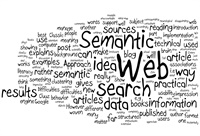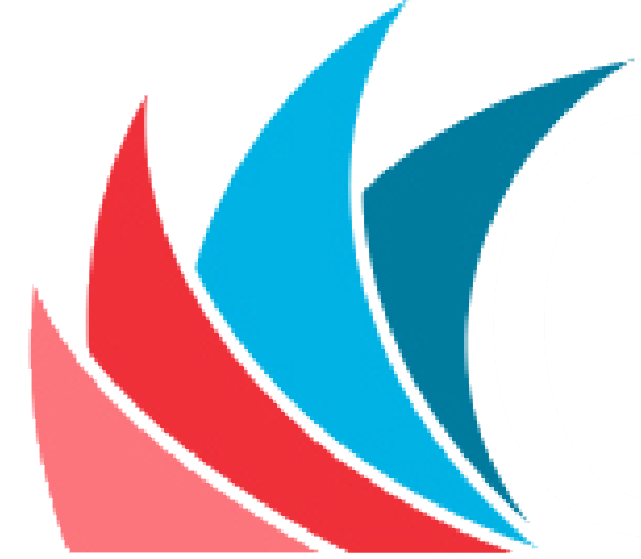
- Faculty:
- Mark Rosch | Carole Levitt
- Duration:
- 1:00
- Short Description:
- More and more attorneys and judges are using social media, either for its intended purpose of social networking (and, for the lesser intended purpose of marketing) or for its unintended purpose of investigative research. There has been much discussion online amongst legal experts about what sorts of investigative activity is ethical for lawyers to engage in. Most Bar Associations however, have not yet addressed this topic. Two exceptions are the Philadelphia Bar and the New York State Bar.

- Faculty:
- Philip Bogdanoff, Esq. | Samantha D. Holmes, PhD
- Duration:
- 1 Hour
- Format:
- Audio and Video
- Short Description:
- Everyone has implicit biases that influence their judgment. However, when selecting a jury it is important for attorneys to uncover the implicit biases of prospective jurors to obtain a jury that can hear your client’s case fairly and impartially. Further, it is essential for attorneys to understand their own implicit biases and how they can influence your decisions when

- Faculty:
- Tom O'Connor, Esq.
- Duration:
- 1 Hour 4 Minutes
- Format:
- Audio and Video
- Short Description:
- Most attorneys in private practice are employed by law firms with fewer than 20 lawyers and, in fact, half of all U.S lawyers in private practice are solos. When e-discovery came on the scene, these attorneys viewed it as the exclusive domain of large firms with large cases in Federal court. But with the increase in digital activity by people in all areas of their lives, e-discovery has become an

- Faculty:
- Tom O'Connor, Esq.
- Duration:
- 1:00
- Short Description:
- In his 5-part series, “eDiscovery for the Rest of Us,”eDiscovery author, lecturer, and consultan Tom O’Connor offers strategic and tactical resources for legal teams navigating the modern ediscovery landscape. Part 3, Colection of Electronically Stored Information (ESI), covers: Forensics Mobile Devices Collaboration Tools Local vs. Remote Collection
Tue, Jan 13, 2026 - 10:00 AM

- Faculty:
- Tom O'Connor, Esq.
- Duration:
- 1 Hour
- Format:
- Audio and Video
- Short Description:
- In his 5-part series, “eDiscovery for the Rest of Us,”eDiscovery author, lecturer, and consultant Tom O’Connor offers strategic and tactical resources for legal teams navigating the modern ediscovery landscape. Part 1, Introduction to Electronically Stored Information (ESI), covers:

- Faculty:
- Tom O'Connor, Esq.
- Duration:
- 1:00
- Format:
- Audio and Video
- Short Description:
- In his 5-part series, “eDiscovery for the Rest of Us,”eDiscovery author, lecturer, and consultan Tom O’Connor offers strategic and tactical resources for legal teams navigating the modern ediscovery landscape. Part 2, Preservation, covers: Duty to Preserve When to Preserve What to Preserve How to Preserve Meet and Confer (1) Th

- Faculty:
- Michael Maschke, EnCE, CEH, ACE, CISSP
- Duration:
- 1 Hour
- Format:
- Audio and Video
- Short Description:
- Learn the ins-and-outs of collecting, analyzing, and recovering evidence from mobile devices. Discover how digital forensic capabilities have grown by reviewing real-world situations. What seems hidden may be revealed after all. Game on! Participants can expect to learn the following during this session: • Explore forensic process from preservation to reporting. • Identify the latest types...

- Faculty:
- Philip Bogdanoff, Esq.
- Duration:
- 2 Hours
- Format:
- Audio and Video
- Short Description:
- Prominent South Carolina attorney Alex Murdaugh was convicted of Murder and he filed a motion for new trial alleging that the clerk of courts tampered with the jury by advising them not to believe Murdaugh’s testimony and pressuring them to reach a quick guilty verdict. After an evidentiary hearing where a juror indicated they were influenced by the clerk to return a guilty verdict, the judge overruled the motion finding that there was insufficient evidence to overturn the jury’s verdict.

- Faculty:
- Philip Bogdanoff, Esq.
- Duration:
- 1 Hour 59 Minutes
- Format:
- Audio and Video
- Short Description:
- Prominent South Carolina attorney Alex Murdaugh was convicted of Murder and he filed a motion for new trial alleging that the clerk of courts tampered with the jury by advising them not to believe Murdaugh’s testimony and pressuring them to reach a quick guilty verdict. After an evidentiary hearing where a juror indicated they were influenced by the clerk to return a guilty verdict, the judge overruled the motion finding that there was insufficient evidence to overturn the jury’s verdict.

- Faculty:
- Charles H. Rose, III
- Duration:
- 1:29
- Format:
- Audio and Video
- Short Description:
- FRE 611 addresses witnesses and establishes the manner and scope of witness testimony during cross examination. While FRE 611 governs the form of cross examination questions, many other evidentiary rules also impact your ability to impeach witnesses. Prosecutors must understand the legal doctrine behind the rules governing impeachment. This presentation will show attendees how to begin ...

- Faculty:
- Nicholas Taylor
- Duration:
- 1 Hour 3 Minutes
- Format:
- Audio and Video
- Short Description:
- Imagine that you could find and have admitted as evidence virtually any public historical web content, and without having to rely on discovery from the opposing party. Imagine that you could thereby establish when specific information was first published, updated, or available online - e.g., patent disclosures, marks and copyrighted materials, terms of service, advertised claims regarding products

- Author:
- Judy K. Davis, Esq | Carole Levitt
- Publication Date:
- May 26, 2020
- Short Description:
- Internet Legal Research on a Budget directs lawyers to useful and reliable free (and low-cost) resources and explains how to use them effectively. This edition has updated information about resources discussed in the first edition, new resources, and expanded chapters on Casemaker and Fastcase.

- Faculty:
- Michael Maschke, EnCE, CEH, ACE, CISSP
- Duration:
- 1 Hour 1 Minutes
- Format:
- Audio and Video
- Short Description:
- Electronic evidence plays a critical role in most cases. Frequently, relevant evidence is now found in the cloud and not on a local computer, server, or external hard drive. Businesses and consumers are using cloud services more than ever. Microsoft 365 has taken over the business world. Third-party messaging apps such as Instagram, TikTok, and WhatsApp continue to flourish. The cloud is now ...

- Faculty:
- Mark Rosch | Carole Levitt
- Duration:
- 1:00
- Short Description:
- Lawyers looking for evidence need to start thinking about looking "virtually." With increasing amounts of "paperless" information being added to the Internet every minute of every day, there is an increasing chance lawyers could find potentially relevant evidence there. Evidence to prove or refute a point in contention, get the upper hand in a settlement conference, or decide w

- Faculty:
- Philip Bogdanoff, Esq.
- Duration:
- 1:03
- Format:
- Audio and Video
- Short Description:
- A prosecutor has the responsibility of a minister of justice and not simply that of an advocate. Seeking justice is about seeking the right result in each case. In some instances, this means declining to prosecute a case where the evidence does not support that a defendant committed the crime and in other cases this means that a prosecutor faced with newly discovered evidence that an innocent

- Faculty:
- Janette Reever
- Duration:
- 1:53
- Format:
- Audio and Video
- Short Description:
- Dogfighting investigations present unique challenges for law enforcement and prosecutors. During this 1.5 hour course, we will review the relationship between dogfighting and other violent criminal activity, relevant Ohio and federal laws, a review of key evidence and investigative techniques and prosecution preparation.

- Faculty:
- Philip Bogdanoff, Esq.
- Duration:
- 2:00
- Format:
- Audio and Video
- Short Description:
- This webinar examines the ethical issues that were parts of the cause for prosecutors losing two major, high-profile cases.
Thu, Jan 29, 2026 - 10:00 AM to 11:59 AM PST

- Faculty:
- Philip Bogdanoff, Esq.
- Duration:
- 2:00
- Format:
- Audio and Video
- Short Description:
- This webinar examines the ethical issues that were parts of the cause for prosecutors losing two major, high-profile cases.

- Faculty:
- Philip Bogdanoff, Esq.
- Duration:
- 1 Hour 5 Minutes
- Format:
- Audio and Video
- Short Description:
- Whether it is a stop and frisk, walk and talk or 911 emergency call for assistance, police officers conduct warrantless seizures and searches every day and it is our job to insure that the evidence they seize does not get suppressed. It has been my experience as a prosecutor that sometimes it can be difficult to justify a police officer’s actions.
Please wait ...

